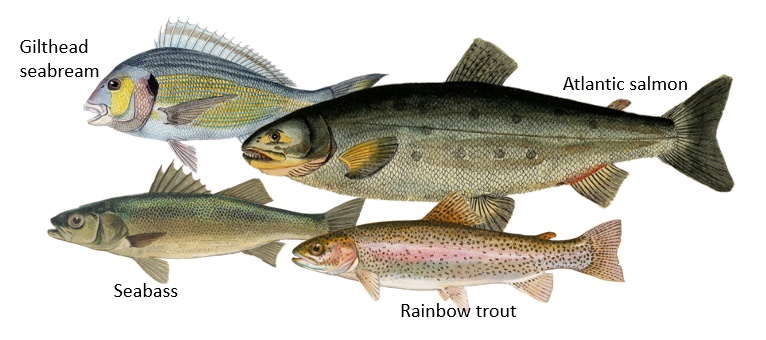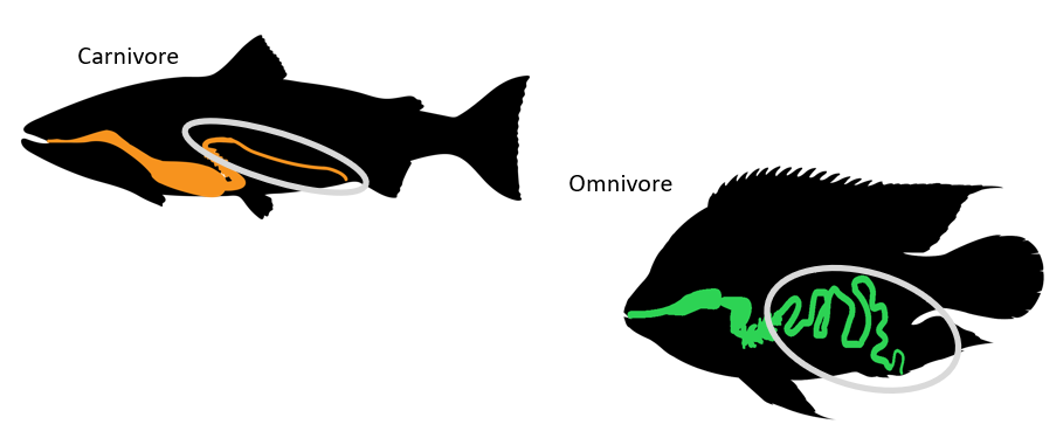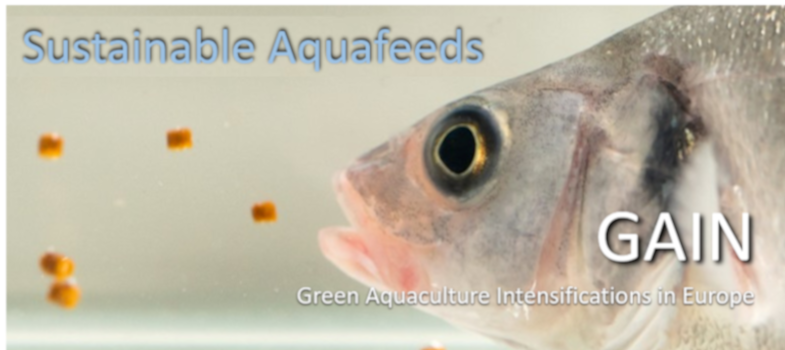Introduction
After completing the first topic of this course, we will now discuss the nutritional requirements for the most common farmed aquatic animals.
More than 24,000 species of fish have been described (freshwater, brackish water, and seawater) and they are all different from one another.
Internal and external morphology of fish provide clues to the feeding ecology of a species. In general, the gut length of a specie reflects its digestive capacity and ultimately, its nutritional requirements, as carnivores are known to possess short and simple guts, whereas omnivores and particularly herbivores have long and complex guts. Therefore, we can say that generally, fish diet is correlated with trophic level and gut morphology in fishes.

Figure 1. Fish of different species
It is generally accepted that fish diet is correlated with trophic level and gut morphology in fishes.
In general, gut length reflects diet, as carnivores are known to possess short and simple guts, whereas omnivores and particularly herbivores have long and complex guts, reflecting the digestibility and nutrient requirements of each type of diet. Nutrients include carbohydrates, fats and lipids, proteins and amino acids, vitamins and minerals, which provide energy, build tissues, and regulate metabolism. In order to provide the fish with correct nutrition, we need to combine feed ingredients in the right proportion so that they receive the nutrients they need at the right stage of production, without failing to consider the costs. To achieve this goal, nutrients and feedstuffs, nutrient requirements, palatability, digestibility, and cost must be considered.

Figure 2. Schematic image showing the digestive system of omnivorous and carnivorous fish.
